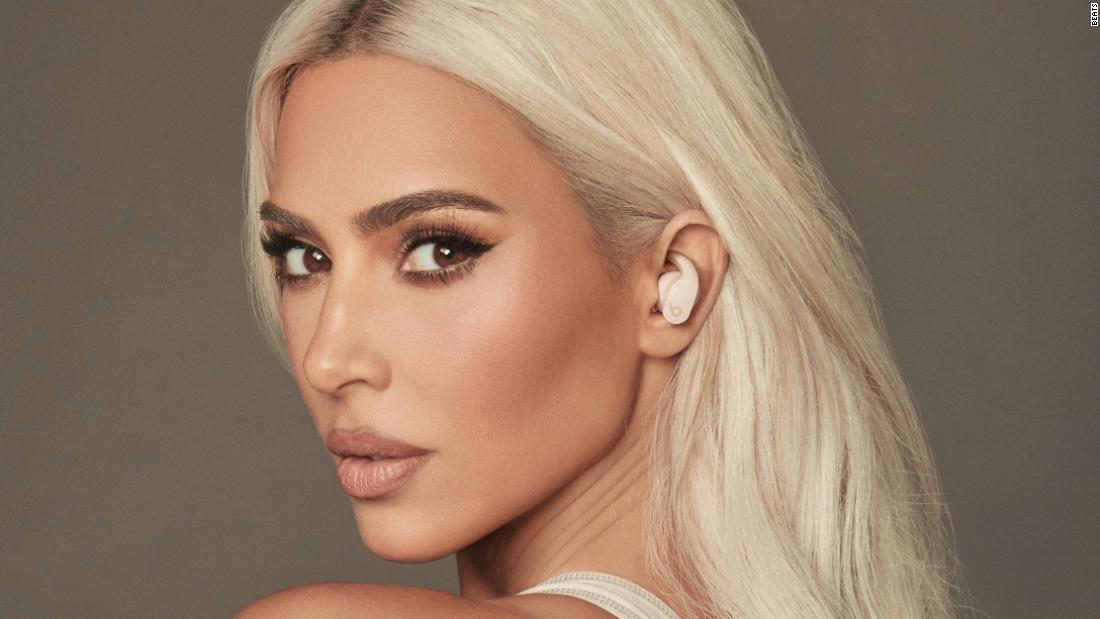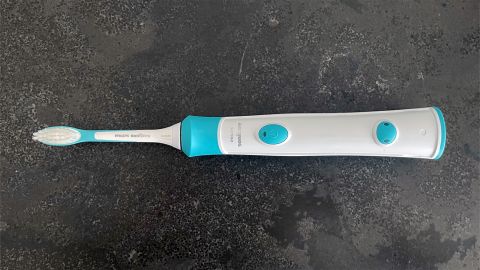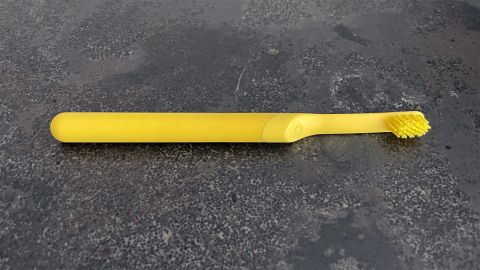
These are the best electric toothbrushes for kids

While kids may not love brushing their teeth, It’s incredibly important to help them build good oral hygiene habits early — even if those baby teeth are going to be given to the tooth fairy one day. Electric toothbrushes not only make brushing easier and more thorough for grownups, but smaller, simpler versions can help kids brush better.
To find the best electric toothbrush for kids, we had two children — a 6- and 9-year-old — use three of the most popular models aimed at younger brushers. We watched them brush, helped them brush and listened to their feedback on what they liked and didn’t like for a three-month period. In the end, we found one clear favorite, and got a better understanding of the pros and cons of the competition.
Best electric toothbrush for kids overall
Easy to use, with a built in-timer, multiple modes and a simple app that guides kids through the brushing session. The Philips Sonicare for Kids makes brushing effective and fun.

If you’re looking for a great electric toothbrush for kids at a reasonable price, the Philips Sonicare for Kids was by far our favorite. Our child testers much preferred its feel and handling — especially the brush head — and we liked extra features such as multiple modes and a dedicated on/off button.
The toothbrush offers two brushing modes: low and high. Toggling between modes is incredibly easy, although you need to select the mode prior to turning the toothbrush on — you can’t change the mode during your brushing session unless you pause the toothbrush (which you can do for a short period without restarting the timer). The high mode offers full power and is designed for older, more independent brushers. This mode offers a full two minute brushing session. The low mode, on the other hand, has reduced power and the timer is initially set for just one minute. Slowly, the timer will increase over time — to the full two minutes. After the two minutes is up, the toothbrush automatically turns off, letting the child know that they accomplished the full recommended brushing cycle.
In addition to a two-minute timer, there’s a 30-second interval timer that briefly pauses the brush head to remind kids child to move to the next quadrant of their mouth. Both children found that the gentle reminder was enough to notice, and told us that it helped them brush all surfaces without focusing on just one section. For children just getting used to an electric toothbrush, there’s also an easy-start feature which gradually increases the power of the toothbrush over the first 14 brushing sessions.
Philips sells two different brush heads — one intended for kids 7 and up (which is the brush head that came in the box) and a more compact brush head size for kids 3 and up. Both offer soft bristles for more gentle brushing. The kids liked the feel of the brush heads, but they can be quite costly at almost $10 per brush head. Alternatively, there are many generic brush head options that are compatible with the toothbrush and are significanltly less expensive price at between $1 to $2 per head.
Similar to many electric toothbrushes, the Philips Sonicare for Kids comes with a rechargeable base with a wall plug. While it takes about 24 hours to fully charge the toothbrush, the charge lasts for up to two weeks. However, if you always keep the brush on the base when not in use, you’ll never have to worry about an uncharged brush.
The Philips Sonicare for Kids also offers Buetooth connectivity with the SonicareKids app with an incredibly easy setup process. The app guides the child during the brushing session to ensure they hit all quadrants and areas of their mouth, plus it gives them helpful tips throughout while allowing them to earn various bonuses through — both of our child testers found the activities fun.
Registered dental hygienist Ana Perez, of Chestnut Dental Associates in Needham, MA, has found that “using this [app] feature with children can be very helpful since it will increase their chances of brushing their teeth twice a day, for the right amount of time and getting all the teeth surfaces.” As a parent, I thought the app did an excellent job interacting with the children without taking away the responsibility of actually brushing their teeth. The app also allowed me to track my child’s brushing session to confirm they actually brushed that morning or evening for the full amount of time.
Overall, using this toothbrush — from both a kids and adults perspective — was extremely intuitive, while also doing a great job removing plaque. And if for some reason the toothbrush doesn’t work out for your child and you aren’t 100% satisfied, you can receive a full refund within 90 days of your purchase.
No matter the age, research shows that brushing your teeth for a full two minutes twice a day is incredibly important — something we found out while researching and testing to find the best electric toothbrushes overall. This leads to better plaque removal and can help avoid cavities. The British Dental Association also recommends this same time frame, twice a day, and since “baby teeth have thinner and often less strong enamel” protecting your teeth — even at a young age — is not something to omit from your daily routine.
Of course a manual toothbrush can get the job done, but a kids electric toothbrush has a few added features that you just won’t find with your traditional brush. Between built-in timers, 30-second quadrant reminders, multiple modes and fun apps, as long as used correctly, an electric toothbrush can help leave your child’s teeth sparkly clean.
Dr. Talia Miller, a pediatric dentist at Norwell Pediatric Dentistry and Orthodontics in Norwell, MA, told us that the built-in timers make electric toothbrushes a good choice for kids who have a hard time brushing for the full two minutes dental health experts recommend Dr. Miller emphasized that an electric toothbrush isn’t a solution in itself, and takes care and adult supervision to use correctly. Some kids, she has observed, have more trouble reaching the back of their mouths with an electric toothbrush, and it may take some effort to “reach back to the molars to successfully remove plaque.”
Dr. Anne Hertzberg, a pediatric dentist at Chestnut Dental Associates in Needham, MA also underscores the importance of teaching proper use and supervising younger children as they learn, going to explain that one issue with electric toothbrushes is that since they do the work for you, children can “tend to get lazy and don’t move the bristles over all of the surfaces of the teeth and often miss brushing at the gumline which is the first place plaque forms.”
This all means that before you hand an electric toothbrush over to your child and as you teach them to use it, it’s important to ensure that good brushing habits are kept in tact, which includes soft circles over all surfaces, for the appropriate amount of time with gentle pressure.
During our testing, we found a few specific functions to be extremely important during our brushing sessions. Below is a description of each functionality and options to look for when considering a toothbrush.
Brushing for a full two minutes is extremely important for everyone, especially kids. All three toothbrushes we tested featured a built-in two minute timer, which helps children truly brush for the recommended time frame. If left to their own devices, there’s a good chance that a child brushes for a split second and hangs up the toothbrush — making a timer imperative. Each toothbrush tested also offers an alert every 30 seconds — either by a different type of vibration or sound — to remind the child to move to the next quadrant of their mouth. When speaking to Dr. Mark Wolff, professor of restorative dentistry at the University of Pennsylvania we were told that “Kids rarely brush too long or too hard, so the timers on the brushes are probably the most important
Applying a gentle amount of pressure is imperative for kids and adults alike. Although most of the adult toothbrushes we tested offered a pressure sensor, none of the kids’ electric toothbrushes offered this feature. Although Dr. Wolff informed us that “children rarely brush too hard or cause damage,” if a pressure sensor is a necessity, due to gum recession or enamel eroding (although not as common in children), you might want to instead consider an adult electric toothbrush that allows you to replace the standard brush head with a kids brush head. For example, we tested the Philips Sonicare 4100 — our overall favorite adult electric toothbrush — with the Philips Sonicare kids brush head and found that the pressure sensor works perfectly.
Unlike adult electric toothbrushes, the kids electric toothbrushes that we tested do not offer a massive variety of modes. If anything, they include a high and low mode, which changes the power level of the brush head.
Some kids toothbrushes — although not all — connect to an app, which helps guide you through your brushing session. Between a timer, brushing tips and fun awards, these can help incentivize your child to brush better.
To help find the best options, we picked out 3 of the more popular kids’ toothbrushes. We had both a 6-year old and 9-year old as our testers, with parents overseeing the brushing process to learn more about the features on each toothbrush. The two children tested each toothbrush for a week and then ultimately picked their favorite to use for an additional three months. This allowed us to truly compare their features, performance and overall effectiveness.
After brushing many baby and adult teeth, we assessed the three brushes in the following categories:
Installation and setup
We analyzed how the brush is charged — whether it runs on battery or with a charging cable base. We then determined how long the brush lasts on a single charge or battery as well as how easy (or difficult) it was to charge the brush or swap out the battery.
For the two brushes with smart features connecting to an app, we determined how easy it was for a child and adult to set up and then actually use the app during the brushing session.
We also assessed the overall look and feel of the toothbrush — how easy was it to hold while brushing, to pack for travel and store on the bathroom counter while not in use.
We tested to see whether or not the brushes offered a 2-minute timer, a 30-second quadrant reminder and a pause option.
The children also brushed their teeth with each brushing mode offered to see whether it was too gentle or tough for their liking.
And ultimately, we determined whether or not the kids’ would brush their teeth with the particular toothbrush.
Maintenance
We reviewed the different types of brush heads and replacement options for each toothbrush, including if there was a subscription plan option. We also compared the cost of the brush heads and whether there was a compatible generic brush head option for less.
Lastly, we looked into the warranty and satisfaction guarantee options, and whether the brush received an ADA Seal of Acceptance, awarded by the American Dental Association’s Council on Scientific Affairs after review by independent experts.

The Oral-B Kids Electric Toothbrush is slightly different from most other electric toothbrushes as it features a circular rotating brush head — which means it spins and pulses instead of just vibrating like most other electric toothbrushes. Oral-B claims that this design “surrounds each tooth for an individualized clean, removing more plaque in hard-to-reach areas.”
However, due to its shape — which seemed very foreign coming from a traditional toothbrush — our child testers had a hard time getting used to it. They felt as though the brush head was too big for their mouths and ultimately didn’t like how it felt against their teeth. Ultimately, brushing teeth is non-negotiable so having a toothbrush that the kids will happily use without a fuss is important.
The toothbrush offers two different cleaning modes — a daily cleaning and sensitive mode — to personalize your experience based on your dentist’s recommendation. Although switching between modes is easy with a single button on the brush handle, the same button also serves as the on/off button, which might be slightly complicated for younger children. My 9-year old had no problem maneuvering between the on/off position and the multiple modes, while my 6-year old had more difficulty — resulting in water splattering more on the counter.
Similar to most other electric toothbrushes, the Oral-B electric toothbrush also offers a 2-minute timer with 30-second interval pulses. The stuttering sound and change in the brush head feel is easy to identify, allowing a child (or an adult brushing their child’s teeth) to know when to move from one quadrant in their mouth to another. However, the toothbrush also goes on working for much longer than the recommended two minutes and even though there’s a longer stuttering sound and movement at the end of the recommended time frame, children might not know exactly when their time is up.
The toothbrush comes with a sensitive brush head, but Oral-B offers a variety of different brush head options for purchase and are compatible with the kids Oral-B electric toothbrush. The kids brush heads are relatively inexpensive at about $5 per replacement, although there are generic brands available for less that will work with this toothbrush.
This is a rechargeable toothbrush, and comes with a charging base that fuels the battery. The charge on the toothbrush lasts about 8 days and a full charge takes about 16 hours.
You can try the Oral-B risk free for 60 days and if you’re not 100% satisfied, you can get a full refund. Since it’s hard knowing what will and will not work for a given child, having two months to test out the toothbrush and ensure it works for them is a welcome benefit, especially given the different shape of the brush head.

The Quip Kids toothbrush has a very similar look and feel to a traditional kids manual toothbrush, but with nylon bristles that vibrate surrounded by rubber bristles to massage the gums. The circular rubber handle is significantly smaller than the Oral-B Kids and Philips Sonicare for Kids, which we found to be more preferable for younger kids. In fact, the The Quip Kids has a very similar profile and works in the exact same manner to the Quip adults version, but with a smaller kid-appropriate brush size head. It’s also the only kids electric toothbrush tested that has received the American Dental Association (ADA) seal of acceptance.
The toothbrush is more gentle and significantly less intense than the other toothbrushes tested, which was preferred by the 6-year old, but not so much by the 9-year old. There’s also only one mode, so you aren’t able to change the settings for a higher intensity. We found that this is a pro and a con, but it comes down to the particular child and their age. With the 6-year old, we preferred this toothbrush — versus the other electric toothbrushes tested. This is because the traditional scrubbing motion of the toothbrush is still required — similar to a non-electric toothbrush — and at his age, learning to brush your teeth is an important skill. But, with the toothbrush, you also have the added vibration benefits — although the vibration sound and feel was significantly less than the other two brushes tested.
A unique feature among the kids brushes is the tongue brush on the back of the brush head. The kids preferred to use the specific tongue brush — as opposed to the regular brush head — when brushing their tongue as they felt as though it did a better job actually cleaning and it was slightly more “fun”. However, unlike the two other toothbrushes we tested, there are no notches on the back of the toothbrush to keep your brush bristle-side up when you put it on the counter, so it can be a little messier than the others we tested.
Also unlike the other toothbrushes tested, this one runs on a standard AAA battery. Quip says the battery should last three months, but in our testing, we were only able to get a little more than two months out of the battery. Some families might not mind having to replace a battery, but we found it to be a slight nuisance as we didn’t happen to have AAA batteries in our house when the supplied battery unexpectedly died.
Fortunately though, Quip has a subscription service where for $5 every three months, they’ll send you a new brush head and a replacement battery. Not only is this reasonably priced, it also serves as the perfect reminder to change your brush head — a task that can sometimes be forgotten about, especially with kids. When signed up for the subscription service, the brush also comes with a lifetime warranty.
Due to the smaller nature in size and the fact that it runs on a battery, the Quip toothbrush is extremely easy to bring with you for travel. The toothbrush comes in an enclosed plastic case with a flat bottom serving as a base to hold your toothbrush upright on your counter.
While Quip offers two different versions of this electric toothbrush, we tested the “smart version,” identical to the standard model save for a Bluetooth connection, letting you use an app to track brushing duration, coverage, strokes and intensity — although it doesn’t guide you while brushing. While the app might be a little too advanced for a child, it’s easy to use as a parent and allows the user (as with the grown-up version) to earn rewards and credits towards future purchases.
Source: https://www.cnn.com/cnn-underscored/reviews/best-electric-toothbrush-for-kids?iid=CNNUnderscoredHPcontainer


















